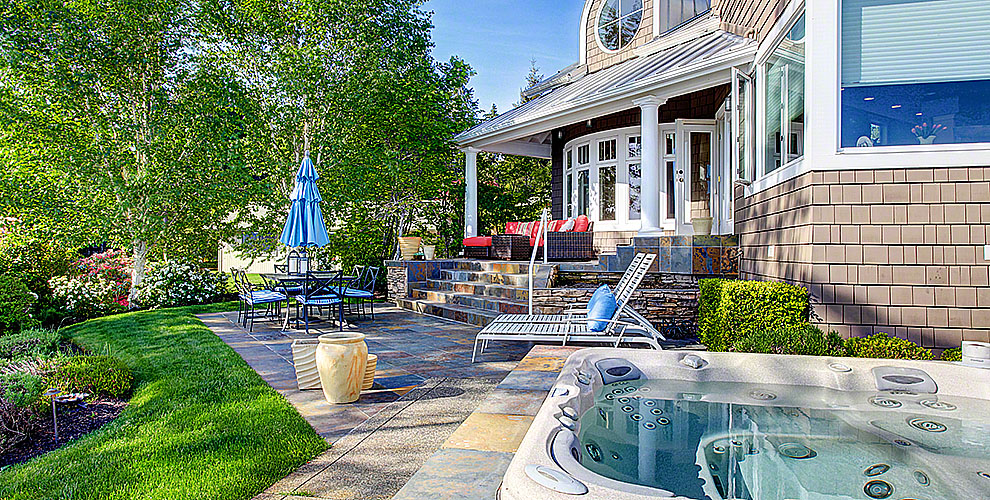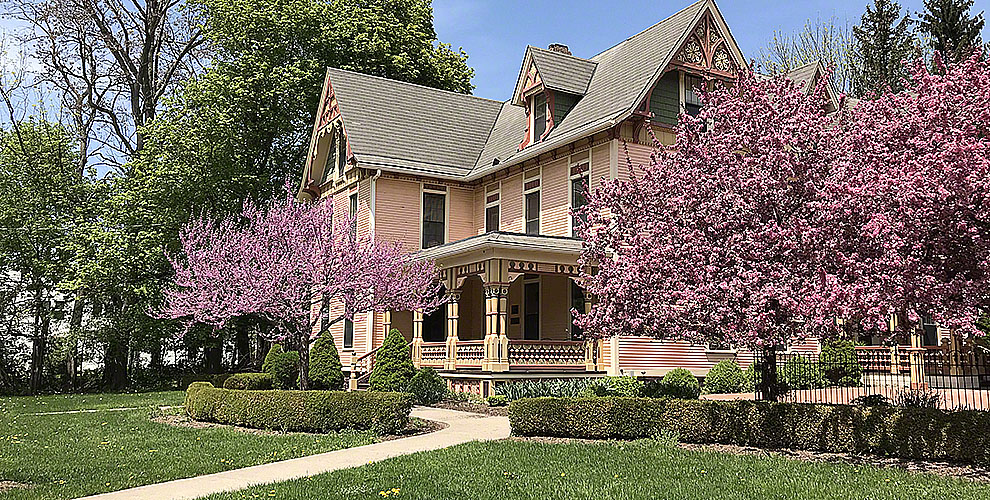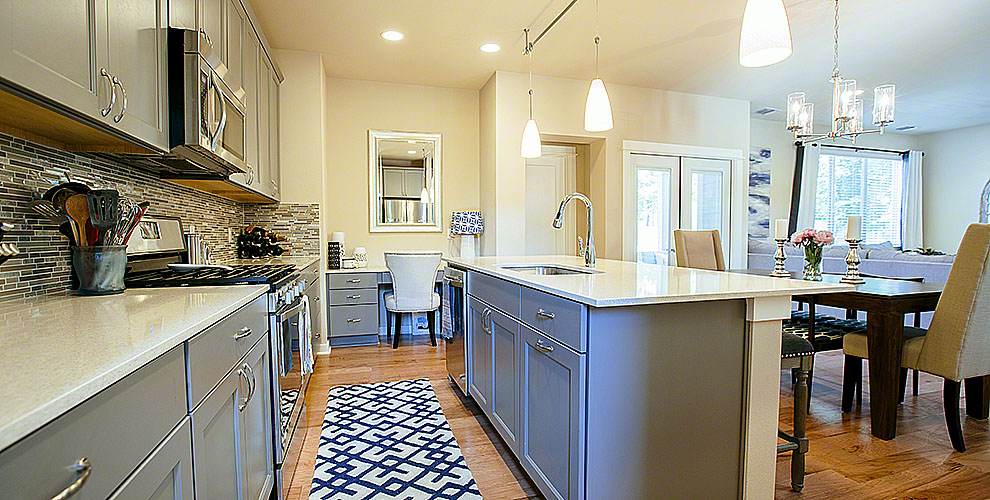Bluestone is a form of sandstone originating from the northeast corners of the US and happens to be one of the most popular choices for patios. As the name suggests, bluestone is usually found in blue colors but also comes in hues of greens, grays, and browns. Considering its texture, colors, and several other factors, many homeowners intend to ask patio contractors for a bluestone patio but remain skeptical. To address their concerns, we will discuss the pros and cons of bluestone patio along with some other aspects that will help make the decision process easier.
How Is A Bluestone Patio Installed?
Before we can dig into the advantages and disadvantages of a bluestone patio, you need to understand the installation process. Although the installation process of a bluestone patio depends on several factors, in most cases, there are two ways to do so.
The first method dry setting. In this, you install pavers on a compacted sand base just as you do in the case of concrete pavers. The biggest benefit of dry setting is that you will be able to manage the patio shifts that take place over time.
However, the disadvantage is that the shifting takes place due to the usage of flexible joint material. To prevent such issues, you will need to hire an expert who uses the right equipment and possesses the knowledge and information to utilize the right techniques and products.
On the other hand, wet setting happens to be more popular and permanent as it involves using concrete and mortar joints. The biggest advantage of a wet setting is that it does not cave under pressure and requires maintenance if sealed properly. Plus, wet settings require relatively more labor hours, which adds to the total cost of the project.
How Much Will A Bluestone Patio Cost?
The total cost of installing or building a bluestone patio is not definite. As mentioned earlier, several factors decide the cost of the project. For instance, the type of setting, number of labor hours and individuals, the dimensions of the patio, etc.
Plus, if your patio area needs to be prepared, it will require some work on the base or foundation and will also add to the costs. However, whatever you spend on the patio will surely give you a good return in the future, should you intend to sell or rent your house.
Furthermore, your geographical location will also contribute to how much you pay for the materials. The cost of the stone increases with the increase in the distance between the stone’s source and its destination. That said, the cost of the bluestone itself will vary based on where you live and from where it will be sourced. If you want to build a cheap patio, choose material that’s readily available in your locality.
Moreover, cost of a bluestone patio will increase if you opt for addition features like a pergola, an outdoor fireplace, or an outdoor kitchen. Patio experts can build additional features, but in some cases, if you have to build an outdoor kitchen, you may have to contact outdoor kitchen contractors Long Island.
What Are The Pros And Cons Of Bluestone Patio?
Now that we have discussed the settings and total costs of setting up a bluestone patio, we come to the most important part, which is the pros and cons. Let’s see if bluestone can be a suitable option for your house.
Pros Of Installing A Bluestone Patio
Bluestone Is Dramatic
Bluestone is known for its visually appealing color combinations. Its color is also what sets its price in many cases. Not many sandstones out there offer the same shades of blue, green, or brown as bluestone does. For someone looking to add a bit of a natural touch to their house, bluestone is going to be a perfect choice.
This is also because it is amongst the very few sandstones that complement the property during rains, snow, and even on bright sunny days. If you intend to build a bluestone patio, make sure to surround it with some plants and shrubs that will add to the aesthetic appeal.
Bluestone Is Versatile
Bluestone’s versatility is another factor that sets its value. There are not many sandstones out there that can pull a combination or a vibe that bluestone does. Moreover, bluestone also ages well with time if well-maintained. Fortunately, its maintenance is not that difficult as well.
Even if you do not have a patio, you can still use bluestone in different areas of the house. This is because you won’t have to put in much time and effort for things to blend in as the stone’s charm does itself. It helps make everything complement perfectly.
Bluestone Is Long Lasting
Bluestone is one of the toughest sandstones out there. It can withstand extreme weather conditions but needs to be sealed properly. It is often that homeowners complain of bluestone cracking or fading after a certain period. In most cases, the culprit comes out to be a lack of maintenance or poor installation job.
This is why, to make your money worth it, you will need to hire a team of experts who can do the job perfectly. Sealing is an integral part of the installation process and should be done with patience. Once the patio is done, it is your responsibility to maintain it to prolong its life.
Cons Of Installing A Bluestone Patio
Bluestone Absorbs Heat
While bluestone’s advantages might tempt you to opt for it. You should not without considering the disadvantages as well. Perhaps the biggest drawback of bluestone is that it absorbs heat. Considering it is a naturally dark stone, it is bound to take in heat.
If you live in a hot region, it could become difficult for you to walk on it or even install it inside. This is also why, bluestone is not recommended for pool decks for hot regions. However, if the patio or the area where bluestone is installed is under a shade, you can go for it.
Bluestone Tends To Flake
Bluestone can be a vulnerable stone if not sealed properly. The reason is that it is made of many compressed sedimentary layers. If the stone is not sealed, water can cause damage to it in the form of flaking of the stone.
This is again why bluestone is not a good choice for pool decks or areas where there is water or excess moisture. It is also not suitable for driveways. In some cases, homeowners may be left with very limited options when it comes to installing a bluestone. You can opt for a gravel patio because it’s cheaper and doesn’t flake because of it’s type. But you have to frequently keep the gravel in place.
Bluestone Can Be Slippery
Even though bluestone is a type of flagstone with a sandpaper-like structure, it can still be a little slippery when wet. Therefore, if you have kids or elderly living in the house, you might want to give it a second thought especially if you plan on installing it inside the house.
Conclusion
Bluestone carries several advantages and disadvantages that need consideration if you intend to use it on your property. Since it is expensive as well, you should not only consider the information above but also consult patio builders Long Island to guide you in the right direction. And, once you have made up your mind, opt for an experienced team that can make the patio last for years without any complications.


